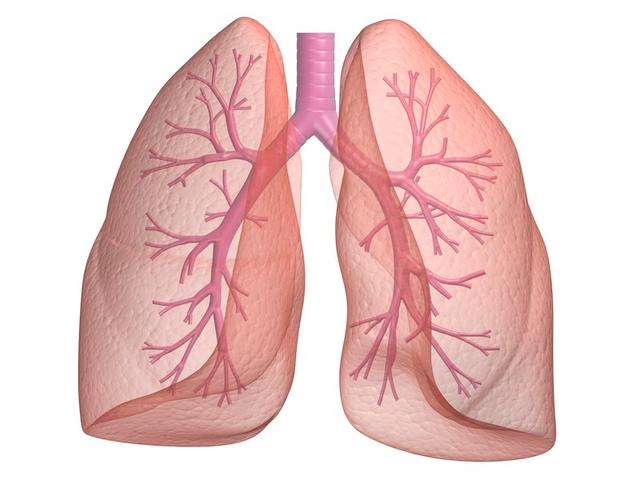Hypothesis
Overview
When breathing in air (inhalation), the lungs fill up with air, from which oxygen is extracted. When exhaling, air is released from the lungs in the form of carbon dioxide. The amount of air held by the lungs is lung volume. Lung volume varies based on the individual. Size, gender, health, age, ethnicity, and geographical location are all factors that cause variation in lung volume. Tall people have a larger lung volume than short people. Being athletic and in good shape increases your lung volume, while health conditions or the lack of exercise can reduce it. People who live in high altitudes will have a larger lung volume than those who live at sea level. In this experiment, you will compare the lung volumes between genders, while eliminating the differences caused by the previously mentioned variables.
Scientific Terms
Materials
Supply of balloons (all equal in size)
20 participants (10 males and 10 females of approximately same age)
A piece of string, about 1 meter in length.
Ruler
Lung volume table (provided).
Data table (provided).
Procedure
Establish your hypothesis: For example - “Boys will have a (higher/lower) lung volume than girls.”
Groups
Divide the participants into two groups: 10 males and 10 females. The individuals of these groups should be of approximately the same age and have no history of asthma, bronchitis, or other health problems.
Lung Volume
Tidal Volume (TV)
- To obtain the participant’s tidal volume, have the individual breath normally into a balloon.
- Have the participant pinch off the end of the balloon to prevent air from escaping.
- Wrap the string around the balloon once in order to obtain the balloon’s circumference.
- Remove the string from around the balloon and lay the string out straight along the ruler to get the measurements of the string.
- Write down the measurement on a separate sheet of paper.
- Check the measurement against the “Lung Volume Conversion Table” to obtain the corresponding lung volume.
- Record the lung volume on the separate sheet of paper.
- Repeat these steps with the participant two more times.
- Find the average lung volume of each participant by adding the three lung volume amounts and dividing by three.
- Record the average tidal volume on the “Lung Volume” data sheet.
- Repeat these procedures with all participants.

Expiratory Reserve Volume (ERV)
- To obtain the participant’s expiratory reserve volume, have the participant practice breathing in deeply and exhaling fully.
- When the participant is ready, have them take a normal breath in the balloon (you will not count this breath in the experiment) followed by taking a deep breath, then forcefully exhaling into the balloon.
- Have the participant pinch off the end of the balloon to prevent air from escaping.
- Wrap the string around the balloon one time in order to obtain the balloon’s circumference.
- Remove the string from around the balloon and lay the string out straight along the ruler to get the measurements of the string.
- Write down the measurement on a separate sheet of paper.
- Check the measurement against the “Lung Volume Conversion Table” to get corresponding lung volume.
- Record the lung volume on a separate sheet of paper.
- Repeat these steps with the participant two more times.
- Find the average lung volume of each participant by adding the three lung volume amounts and dividing by three.
- Record the average tidal volume on the “Lung Volume” data sheet.
- Repeat these procedures with all participants.
- Determine if the results support your hypothesis.
|
Lung Volume Conversion Table |
|
|
Balloon Diameter centimeters |
Lung Volume Cubic centimeters |
|
12 |
1,000 |
|
13 |
1,250 |
|
14 |
1,500 |
|
15 |
2,000 |
|
16 |
2,250 |
|
17 |
2,500 |
|
18 |
3,000 |
|
19 |
3,500 |
|
20 |
4,000 |
|
21 |
4,500 |
|
22 |
5,500 |
|
23 |
6,000 |
|
24 |
7,000 |
|
Lung Volume Data Sheet |
|||||
|
Male |
TV |
ERV |
Female |
TV |
ERV |
|
Participant 1 |
Participant 1 |
||||
|
Participant 2 |
Participant 2 |
||||
|
Participant 3 |
Participant 3 |
||||
|
Participant 4 |
Participant 4 |
||||
|
Participant 5 |
Participant 5 |
||||
|
Participant 6 |
Participant 6 |
||||
|
Participant 7 |
Participant 7 |
||||
|
Participant 8 |
Participant 8 |
||||
|
Participant 9 |
Participant 9 |
||||
|
Participant 10 |
Participant 10 |
Also consider
Repeat the experiment over a wide range of age groups and ethnicities
References
“What Should I Know about Lung Capacity?” on the Wise Geek web site http://www.wisegeek.org/what-should-i-know-about-lung-capacity.htm
“Respiratory or Lung Volumes and Capacities” at GetBodySmart http://www.getbodysmart.com/ap/respiratorysystem/physiology/spirometry/volumescapacities/animation.html

